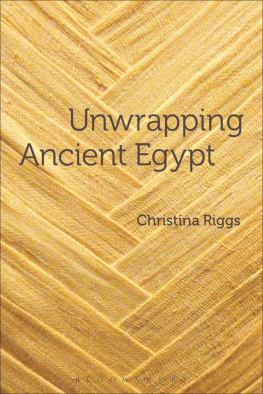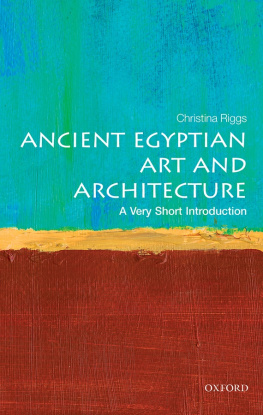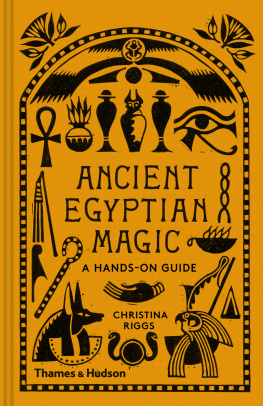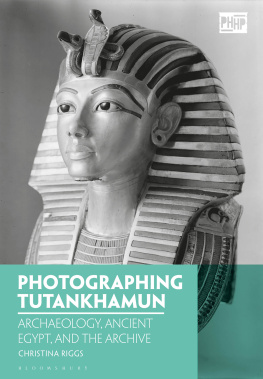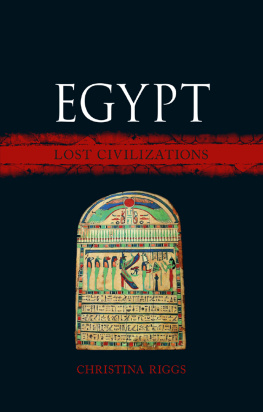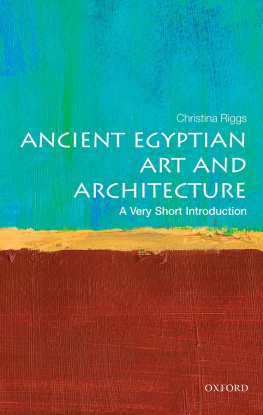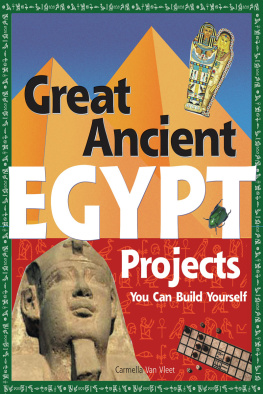Bloomsbury Academic
An imprint of Bloomsbury Publishing Plc
| 50 Bedford Square | 1385 Broadway |
| London | New York |
| WC1B 3DP | NY 10018 |
| UK | USA |
www.bloomsbury.com
Bloomsbury is a registered trade mark of Bloomsbury Publishing Plc
First published 2014
Christina Riggs, 2014
Christina Riggs has asserted her rights under the Copyright, Designs and Patents Act, 1988, to be identified as Author of this work.
All rights reserved. No part of this publication may be reproduced or transmitted in any form or by any means, electronic or mechanical, including photocopying, recording, or any information storage or retrieval system, without prior permission in writing from the publishers.
No responsibility for loss caused to any individual or organization acting on or refraining from action as a result of the material in this publication can be accepted by Bloomsbury or the author.
British Library Cataloguing-in-Publication Data
A catalogue record for this book is available from the British Library.
ISBN: ePub: 978-0-85785-677-7
Library of Congress Cataloging-in-Publication Data
Riggs, Christina.
Unwrapping ancient Egypt : the shroud, the secret and the sacred / Christina Riggs.
pages cm
ISBN 978-0-85785-507-7 (pbk.) ISBN 978-0-85785-539-8 (hardback) ISBN 978-0-85785-677-7 (epub)
1. MummiesEgypt. 2. Textile fabrics, AncientEgypt. 3. BurialEgyptHistoryTo 1500. 4. Funeral rites and ceremoniesEgypt. 5. EgyptCivilizationTo 332 B.C. I. Title.
DT62.M7R542014
932dc232013045827
The opportunity to deliver the Evans-Pritchard Lectures at All Souls College, Oxford, in 2012 was pivotal in the development of this book, and I am grateful to the Warden and Fellows of the college and to the Evans-Pritchard selection committee, in particular Prof. David Gellner, Prof. Wendy James, and Prof. Sir John Vickers. The colleges hospitality provided an ideal setting in which to reflect on my ideas and revise the manuscript, while responses from the lecture audience offered valuable encouragement and insight. Many other institutions and individuals have contributed to the project at every stage. A Research Fellowship from the Arts and Humanities Research Council (AHRC) of the UK, combined with study leave from the University of East Anglia (UEA), enabled me to devote the 201011 academic year to research and writing, without which I would never have completed a first draft. At UEA, the stimulating, cross-disciplinary environment of the School of Art History and World Art Studies has been essential to the development of my research and my approach to my subject, and I thank my colleagues and students for their interest and support throughout. At Bloomsbury, Louise Butler had faith in the book when other publishers scratched their heads, while Sophie Hodgson, Molly Beck, and the production staff have offered exemplary attention during the editorial and production process.
In preparing images for the book, I have benefitted from the wizardry of Nick Warr at UEA and from the assistance of staff at the Egypt Exploration Society, the Griffith Institute at Oxford University, the Institut Franais dArchologie Orientale, the Metropolitan Museum of Arts Department of Egyptian Art, the Oriental Institute at the University of Chicago, the Petrie Museum of Egyptian Archaeology at University College London, and the Theban Mapping Project. Laurent Coulon, John Freed, Angela Palmer, and Martin Andreas Stadler provided images with grace and speed, and Ruth Rogers generously gave permission to use her photograph of a wrapped Osiris figure in the Metropolitan Museum of Art (see ) on the cover of the book. The astonishing detail of the interleaved strips of ancient, folded linenreconstructed by museum staff in the 1940swas one of the winning entries in the Metropolitan Museums 2011 Get Closer photography contest and conveys the intricacy of Egyptian wrapping practices in every sense.
Writing a book is a solitary activity, but the work that goes into shaping the ideas in a book is anything but. My thinking about archaeology, Egyptology, museums, colonialism, human remains, and textiles has benefitted from conversations and exchanges with a number of individuals, including Sam Alberti, John Baines, Will Carruthers, Karen Exell, Ann French, Elizabeth Frood, Chris Gosden, George Lau, Victoria Mitchell, Sarah Monks, Robert Preucel, Gay Robins, Eleanor Robson, Alice Stevenson, Willeke Wendrich, David Wengrow, Ghislaine Widmer, and the late Dominic Montserrat. The chance to present my work at the Theoretical Archaeology Group meeting (Durham 2009) and the Visualization in Archaeology conference (Southampton 2011), and to audiences at Cambridge University, the Egypt Exploration Society, and the Norwich University of the Arts, also helped me formulate some of my ideas and respond to feedback from students, academics, and the public.
The personal and the professional are often closely linked in academic work, as this book itself demonstrates by interweaving my previous experience as a museum curator with my intellectual exploration of textiles, mummification, and the history and practice of Egyptology. My last three acknowledgments bridge the personal and the professional as well. It may be a hazard of academic life, but it so happens that I have met my closest friends in university librariesincluding the archaeologist Sabine Laemmel, whose steadfast presence during a crucial summer of research on this project meant more than she can know. Armed with a sense of humor, a sharp pencil, and a sharper brain, another friend, the Egyptologist Tom Hardwick, read the entire manuscript, including early versions that could most charitably be described as unkempt. His comments and belief in the project were invaluable, and his corrections saved me from several errors, although any that escaped remain my own. My UEA colleague, the anthropologist Ferdinand de Jong, helped shape the argument and structure of the book at every stage, especially through discussions about secrecy, colonialism, and the politics of heritage. He challenged me to address issues I would not otherwise have considered and to question assumptions I had not realized I was making. His input has made this book (and my life) considerably more interesting.
Christina Riggs
Norfolk 2013

